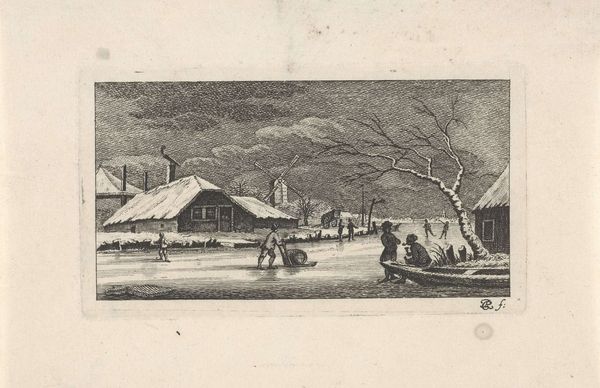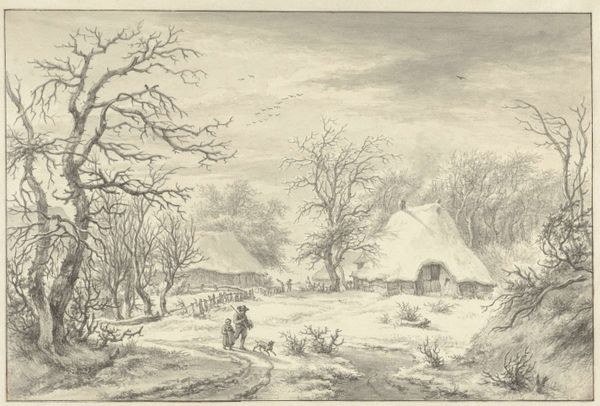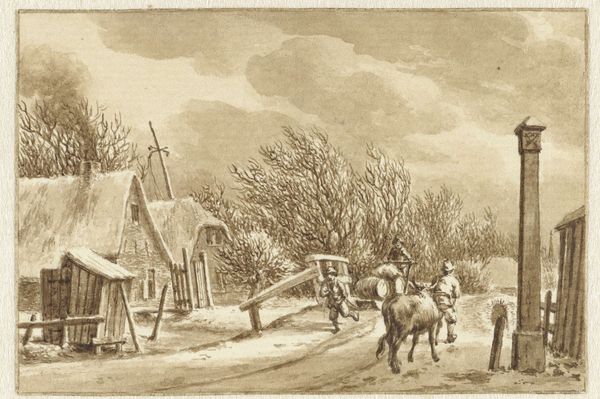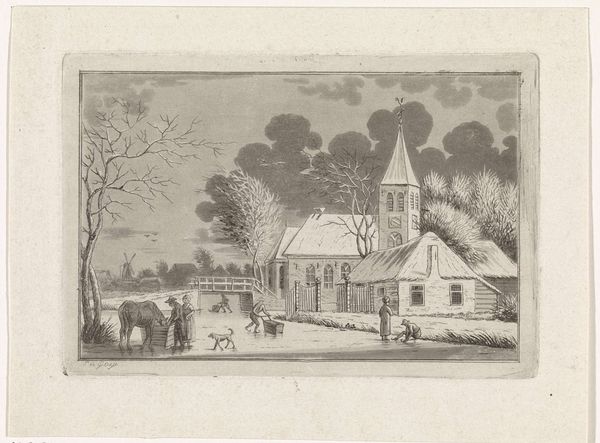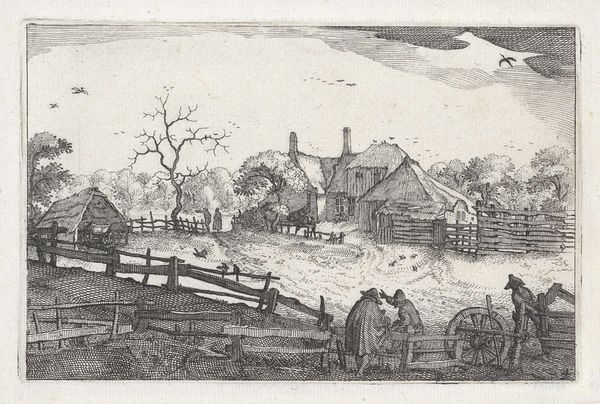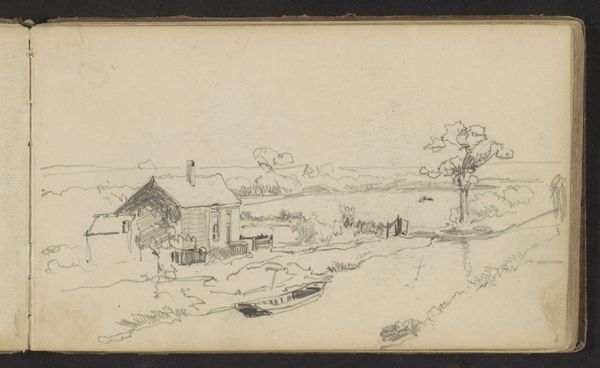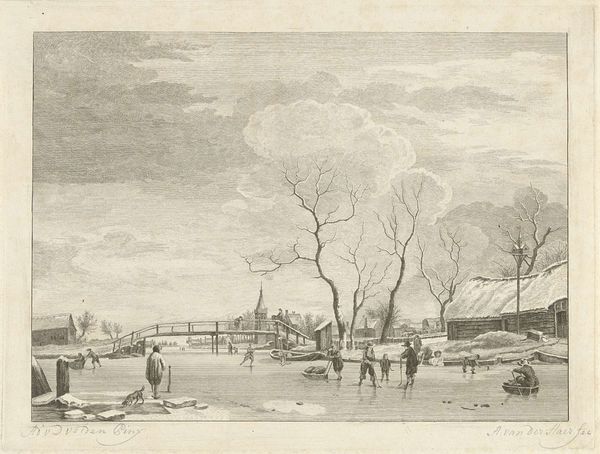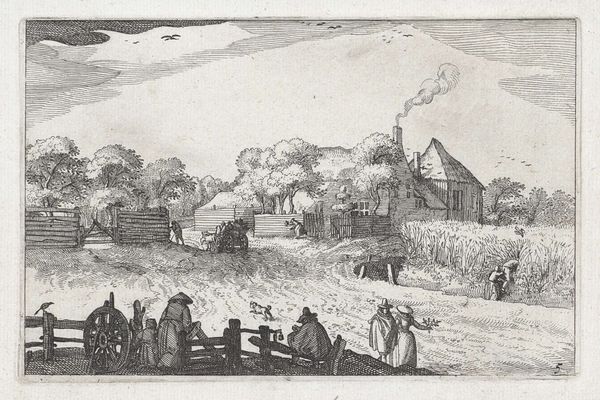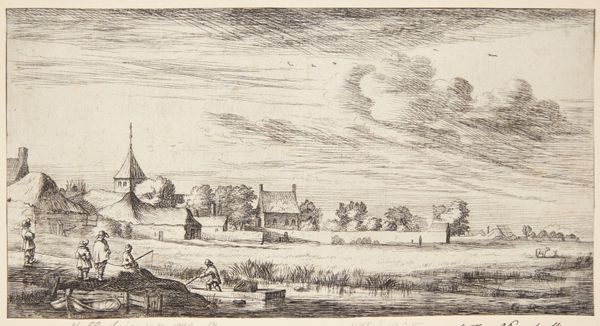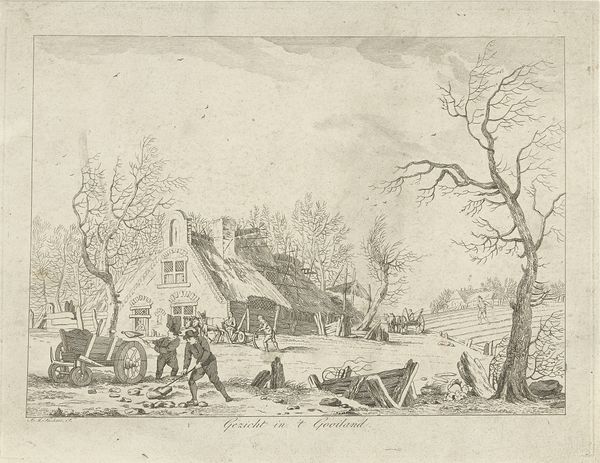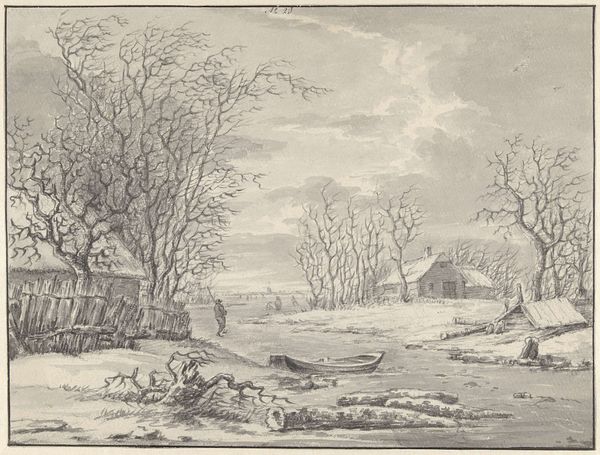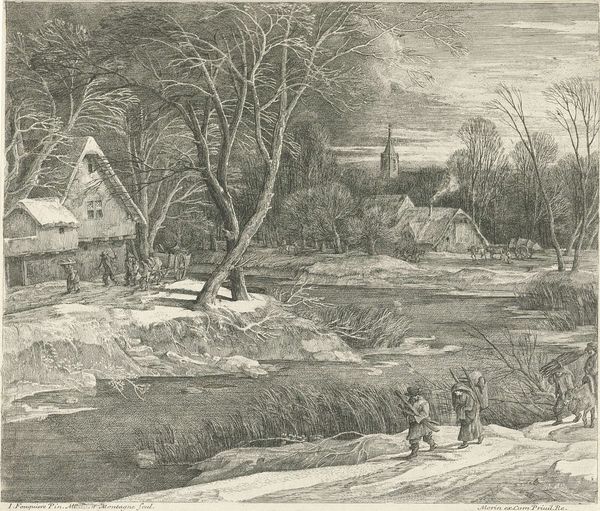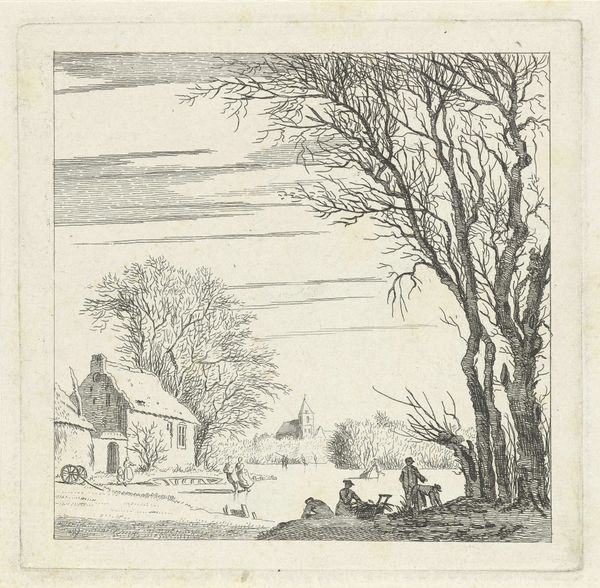
Dimensions: height 55 mm, width 98 mm
Copyright: Rijks Museum: Open Domain
Editor: So, we’re looking at "Winterlandschap" by Caspar Jacobsz. Philips, an engraving from 1766, currently at the Rijksmuseum. It's a charming scene, but also a little…bleak? Everyone’s skating on the ice, but there’s also this strong sense of harsh winter life. What strikes you about it? Curator: The most fascinating thing about genre scenes like this is understanding the socio-political context in which they thrived. This isn't just a quaint picture of people enjoying winter; it's a carefully constructed image reinforcing certain social structures. Editor: Social structures? How so? Curator: Look at who’s engaging in leisure. Is it a picture of the aristocracy at play, or something different? Note the architecture, the clothing of the figures – these all tell us about class and access to resources. How would this image have been received by different audiences in 1766? Did it serve to romanticize rural life for an urban elite? Editor: I hadn't considered that! The people seem fairly ordinary, maybe even a little worse for wear, as are the houses. So the scene is being “sold” to a wealthier audience, maybe? Curator: Precisely. Prints like these were widely circulated, becoming a form of visual propaganda, if you will. They presented a specific vision of Dutch life, which museums like the Rijksmuseum have historically re-emphasized. Who chooses which image to collect and display has bearing on what narrative gets propelled forward. Editor: That’s fascinating. It changes how I see the entire piece, knowing there’s a potentially loaded message behind the pretty picture. Thanks for sharing. Curator: Absolutely, it shows how deeply art is intertwined with society's own projections and assumptions.
Comments
No comments
Be the first to comment and join the conversation on the ultimate creative platform.
